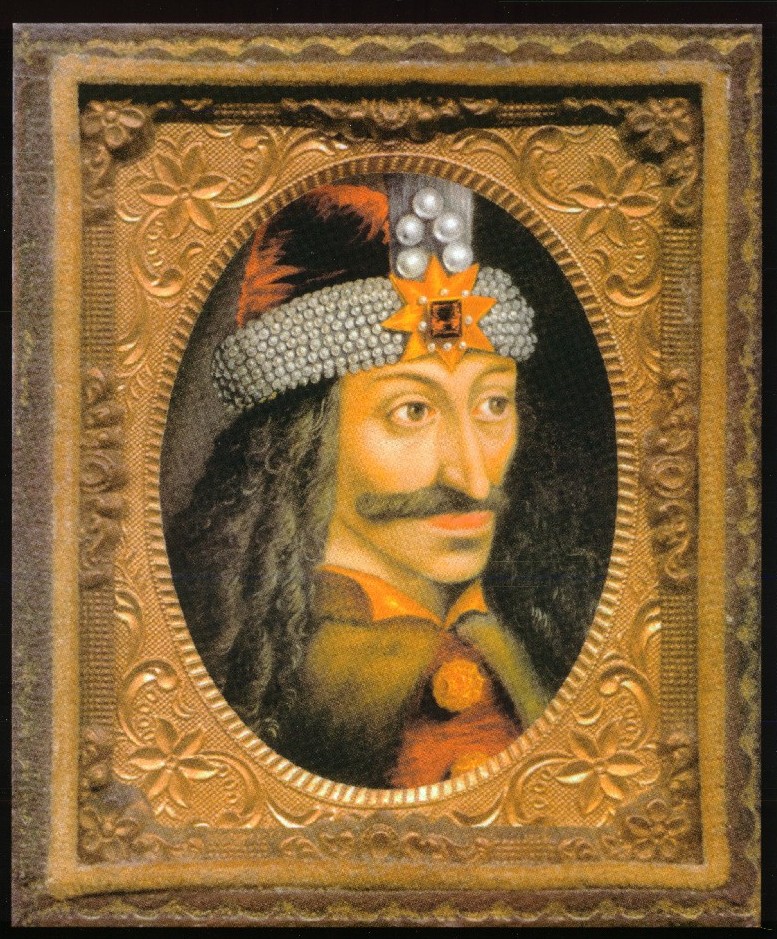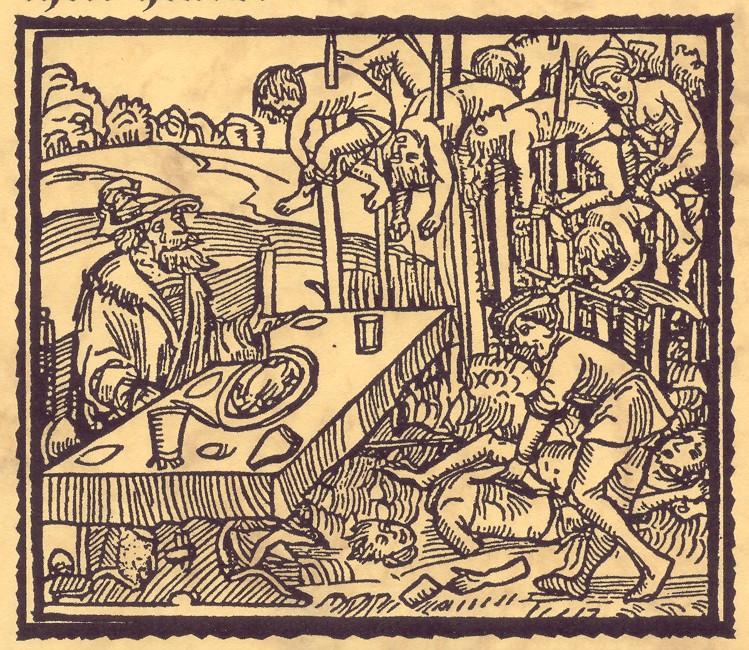THE DRACULEAN THEORY OF CRIMINAL JUSTICE:
Coping With Reinventing Western Criminal Justice Systems
[Published in The Journal of Irreproducible Results, a satire magazine, in 1996]
By Henry Zecher
 Average,
ordinary, everyday people ~ clinically defined as those with mortgages, 2.5
children, and credit card debts ~ have traditionally been far too concerned
with the rising cost of living to give any thought to the growing threat of
crime.
Average,
ordinary, everyday people ~ clinically defined as those with mortgages, 2.5
children, and credit card debts ~ have traditionally been far too concerned
with the rising cost of living to give any thought to the growing threat of
crime.
In recent years, however, this has changed dramatically. The rising
crime epidemic has spread most alarmingly beyond the inner cities to envelope
the surrounding suburbs, throwing law-abiding citizens into a state of panic.
Coupled with this is the growing liberalism of modern criminal justice
systems, resulting in the recasting of violent criminals as victims of the
society on which they prey, the rendering of sentences far less severe than
their crimes demand, and even the early release of admittedly unreformed
violent criminals. In one recent case, fittingly called "The Trial of the
Century" because it lasted nearly that long, a man charged with murdering his
wife and her lover was acquitted, to the disgust a vast portion of the
population which was convinced he did it.
Thus, we now have a growing anarchy of the criminally insane
controlling the general populace through fear. Recent studies (Kennedy and
Khrushchev, 1962; Nixon and Haldeman, 1973) indicate a growing tendency toward
armed camps: in this case, members of polite society suffering pre- and
post-traumatic syndromes, neurotic anxieties, and paranoid personality
disorders ~ sometimes all at the same time ~ which tends to render ordinary
citizens capable of violently disassembling the first thing that walks through
the door.
Violent criminals are also avoiding the due penalties of their crimes
by simply pleading various forms of mental derangement, therapy and recovery,
placing the blame elsewhere, and appealing to the sympathies of
all-too-sympathetic juries. One man, who murdered both his supervisor and the
mayor of his city, contended that the cream filling in the Hostess Twinkies
had driven his blood sugar level dangerously high. Time Magazine (June
6, 1994) reported that, by parading life's abnormalities before the viewing
public, television talk shows (Oprah, Geraldo, Donahue, Raphael, etc.) have
made juries more sympathetic with novel defense strategies, leading to what
the attorney general of California called "the Oprahization of the jury pool."
A blatant murderer can win his jury's understanding and sympathy with a
heart-rending defense plea centered on childhood abuse, irascible laws, or
Twinkie cream filling. Thus did Playboy (June 1994) suggest, "If you
don't want to do the time, all you need to do is whine."
For these reasons and perhaps more, many sociologists have begun to
entertain the notion of reinventing our criminal justice system. This means
reversing the liberal judicial climate and returning to more harsh but
successful punitive systems of the past. One such system currently under
study, and one which has begun to receive more attention among those suffering
from violence-induced trauma, is the harshly punitive system employed by the
infamous blood-shedding territorial ruler, Dracula.
This Dracula is not Bram Stoker's evil undead predator who feasts on
the blood of his victims and destroys them in the process; these qualities get
you elected to Congress. The Dracula of this study is Prince Vladimer, the
15th century Transylvanian ruler who inspired Stoker's monster. Vladimer was
an unusually cruel man in a cruel age, known for his cunning, trickery and
brutality, and feared far and wide for inflicting in a most indiscriminate
manner the most tortuous forms of execution imaginable. His fiercest enemies,
the Turks, called him Kaziglu Bey (Lord Impaler). He was, according to a
contemporary German pamphlet, the "MONSTER and BERSERKER called Dracula who
committed such unchristian deeds as killing men by placing them on stakes,
hacking them to pieces like cabbage, boiling mothers and children alive and
compelling men to acts of cannibalism." History remembers him as Vlad Tepes,
Vlad the Impaler, but he was known to his people and to us as Dracula (meaning
"son of the devil").
But, however cruel he was, Prince Vladimer implemented and maintained
the most crime-free society the western world has ever seen. He ruled his
territory with an iron fist. He established a strict code of ethics and
enforced it with a reign of terror which hung like a sword of Damocles over
the land. He prescribed impalement for any crime, real or imagined; and he
even once repulsed the invading Turks when the sight of impaled victims at
Giuraia on the Danube frightened the invaders, and the sight of 20,000 impaled
prisoners and captives rotting in the sun at Targoviste sickened the usually
stout conqueror of Constantinople, Mohammed II.
Vladimer
refined his method of impalement by using oiled stakes with rounded ends,
which prolonged the victim's torture and delayed his death for several days as
he hung suspended above the ground. Victims were mounted on poles in
concentric circles around the cities, or around Castle Dracula, in order to
afford onlookers a better view. This allowed the people to see what would
happen to them if they transgressed either the law or their ruler's mood du
jour. Yet, while impalement was Vladimer's favorite form of execution, he
was by no means stuck "in a rut." For variety he would drive nails into
victims' skulls, cut off limbs, noses and ears, and boil victims alive. He ran
over some with carts, roasted others over hot coals, and skinned still others
alive down to their entrails. Whenever he felt his subjects needed a good
laugh, he would salt the soles of his victims' feet for the animals to lick
interminably.
Being politically correct, the Prince was an equal opportunity
executioner, torturing and killing all candidates regardless of sex, age,
religion or nationality. His atrocities were described ~ during his lifetime ~
in contemporary Turkish, Slavonic, Byzantine and German writings, as well as
folklore and popular horror stories. The result was that crime was nearly
nonexistent while he reigned. Here are two documented examples:
| 1) At a
well-known fountain in a deserted square at Targoviste, Dracula placed a
golden cup that, anywhere else, would have openly invited theft. The cup,
however, was never taken while he lived. |
| 2) A
merchant traveling through Dracula's territory with his treasure-laden
cart knew of the territory's reputation for honesty. He left his cart
outside the inn overnight. The next morning, however, he discovered that
160 gold ducats had been stolen, and he duly reported the theft to
Dracula. The Count gave the town two choices: turn in the thief with the
gold, or he would destroy the town and kill every man, woman and child
therein. Thus he tested the honesty of the town. Meanwhile, to test the
honesty of the merchant, he secretly had 161 gold ducats placed in the
merchant's cart. The thief and the gold were turned in and the thief was
impaled. The merchant, meanwhile, counted his gold, discovered the
discrepancy, and reported the extra ducat to Dracula. Having proven his
own honesty, the merchant was then allowed to leave with his life as well
as his gold. |
In an age
of rampant barbaric behavior, Vladimer's system of criminal justice reduced
crime in his jurisdiction to practically zero. In western cultures, there is
good reason to predict that a return to the Draculean formula of criminal
justice could have the same effect today that Vladimer's program had 400 years
ago. Meanwhile, there would be several side benefits.
For one thing, liberal-minded crusaders who view criminals as victims
will find that under a Draculean system criminals, having preyed on helpless
citizens, become "victims" of impalement; and humanitarian concerns may be
assuaged by the fact that the Lord Impaler always demanded pre-execution
confessions to purge the soul; and a slow demise rather than a quick death
allowed the condemned time to reflect upon his crimes and to mend his ways.
The necessity to adapt the punishment to fit the crime, so tedious and
so inconsistent between jurisdictions, would be negated by inflicting the same
punishment for all misdeeds, from the merest misdemeanor to the most hideous
atrocity. Indeed, responsibility for such determinations would weary no one
save the tyrant in whom it would be vested, and the style of torture itself,
as well as its duration, would be completely dependent upon tyrannical whims.
Finally, there is the "laboratory tested" deterrent quality.
Impalement proved in Vlad's time to be a most effective deterrent to crime,
for which reason his territory had the lowest crime rate of any western
society. Today's methods of execution have failed here, partly because they
are not visible to the populace at large, and perhaps partly because they are
both too quick and not up to historical standards of "cruel and unusual
punishment."
Prolonged suffering, lasting for several days and visible to all, has
been shown to have a pronounced salutary effect on criminal behavior.
© 2006 Henry Zecher
![]()